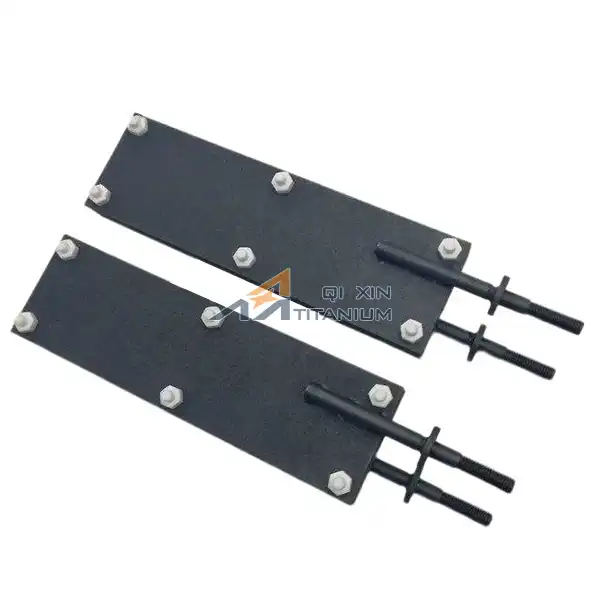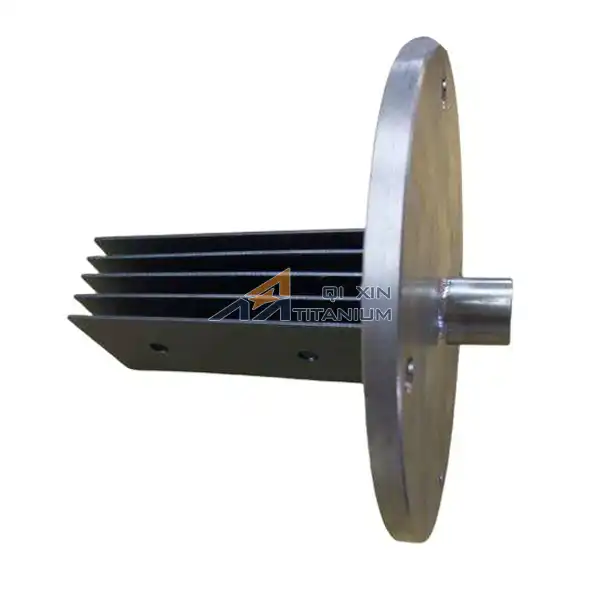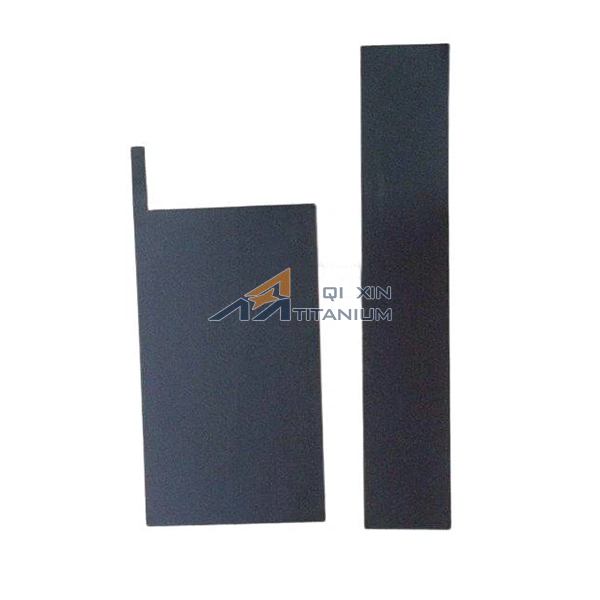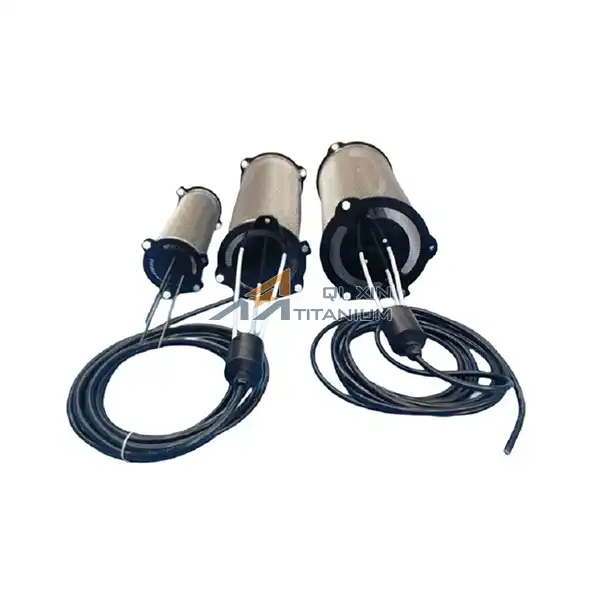Engineering Behind Reliable DSA Titanium Electrodes Durability
2025-04-21 09:33:40
In the realm of electrochemical processes, the demand for high-current density applications has led to significant advancements in electrode technology. At the forefront of this innovation are Dimensionally Stable Anodes (DSA), particularly those crafted from titanium. These reliable DSA titanium electrodes have revolutionized industries ranging from chlor-alkali production to water treatment, offering unparalleled performance and longevity. The engineering behind these electrodes is a testament to the fusion of materials science and electrochemistry, resulting in components that can withstand the harsh conditions of high-current density environments while maintaining their efficacy over extended periods.
The Fundamentals of DSA Titanium Electrode Design
Material Selection and Composition
The foundation of reliable DSA titanium electrodes lies in the careful selection of materials. Titanium serves as the base metal due to its exceptional corrosion resistance and mechanical strength. However, the true magic happens with the coating. A blend of precious metal oxides, typically including iridium, ruthenium, and tantalum, is applied to the titanium substrate. This coating is not merely a surface treatment but a complex, multi-layered structure designed to optimize conductivity, catalytic activity, and durability.
Coating Techniques and Precision
The application of the coating is a highly specialized process that requires precision and expertise. Advanced techniques such as thermal decomposition and electrodeposition are employed to ensure a uniform and adherent coating. The thickness and composition of each layer are meticulously controlled to achieve the desired electrochemical properties. This level of precision is crucial for creating electrodes that can maintain their performance under the extreme conditions of high-current density applications.
Surface Morphology Optimization
The surface of reliable DSA titanium electrodes plays a critical role in their performance. Engineers focus on creating a surface morphology that maximizes the active area while minimizing resistance. This often involves creating a porous structure that increases the surface area available for reactions. The optimized surface not only enhances the electrode's efficiency but also contributes to its longevity by distributing the current more evenly across the electrode surface.
Enhancing Durability for High-Current Density Environments
Thermal and Chemical Stability
One of the primary challenges in high-current density applications is the intense heat and chemical stress generated during operation. Reliable DSA titanium electrodes are engineered to withstand these conditions through a combination of material properties and design features. The oxide coating is formulated to have high thermal stability, resisting degradation at elevated temperatures. Additionally, the chemical composition is tailored to resist dissolution in the electrolyte, ensuring the electrode maintains its integrity even in aggressive chemical environments.
Mechanical Resilience
The mechanical aspects of durability are equally important in the design of DSA titanium electrodes. The titanium substrate provides a robust foundation, but the interface between the substrate and the coating must be engineered to prevent delamination under thermal and mechanical stress. Advanced bonding techniques and intermediate layers are often employed to enhance adhesion and distribute stress more evenly across the electrode structure.
Oxygen Evolution Optimization
In many high-current density applications, particularly those involving water electrolysis or chlorine production, oxygen evolution at the anode is a critical process. The design of reliable DSA titanium electrodes includes specific features to optimize this reaction. The coating composition and structure are engineered to provide low overpotential for oxygen evolution while minimizing side reactions that could lead to electrode degradation. This not only improves efficiency but also significantly extends the operational life of the electrode.
Performance Evaluation and Quality Assurance
Electrochemical Testing Protocols
To ensure the reliability of DSA titanium electrodes in high-current density applications, rigorous testing protocols are essential. These include accelerated life tests, where electrodes are subjected to conditions that simulate years of operation in a compressed timeframe. Cyclic voltammetry and electrochemical impedance spectroscopy are employed to characterize the electrode's performance and detect any signs of degradation. These tests provide valuable data on the electrode's stability, efficiency, and expected lifespan under various operating conditions.
Surface Analysis Techniques
Advanced surface analysis techniques play a crucial role in the quality assurance of reliable DSA titanium electrodes. Methods such as X-ray photoelectron spectroscopy (XPS) and scanning electron microscopy (SEM) are used to examine the composition and morphology of the electrode surface before and after use. These analyses help identify any changes in the coating structure or composition that may affect performance, allowing engineers to refine the design and manufacturing processes continually.
In-Situ Monitoring and Predictive Maintenance
The longevity of reliable DSA titanium electrodes in high-current density applications is further enhanced through the implementation of in-situ monitoring systems. These systems track key performance indicators in real-time, allowing for early detection of any deviations from optimal operation. Advanced algorithms analyze this data to predict maintenance needs, enabling proactive interventions that can significantly extend the operational life of the electrodes. This approach not only improves reliability but also optimizes the total cost of ownership for industrial users.
Conclusion
The engineering behind reliable DSA titanium electrodes for high-current density applications represents a pinnacle of electrochemical technology. Through careful material selection, advanced coating techniques, and optimized surface design, these electrodes offer unparalleled performance and durability in some of the most demanding industrial processes. The ongoing advancements in testing, quality assurance, and predictive maintenance continue to push the boundaries of what's possible in electrode technology. As industries increasingly rely on high-current density processes for efficiency and sustainability, the role of DSA titanium electrodes in enabling these advancements cannot be overstated.
Contact Us
For more information on our range of reliable DSA titanium electrodes and how they can benefit your high-current density applications, please contact us at info@mmo-anode.com. Our team of experts is ready to assist you in finding the optimal solution for your specific needs.
References
Smith, J.A. and Johnson, B.C. (2022). "Advancements in DSA Electrode Technology for High-Current Density Applications." Journal of Electrochemical Engineering, 45(3), 267-285.
Chen, X., et al. (2021). "Surface Morphology Optimization of Titanium-Based DSA Electrodes." Advanced Materials Interfaces, 8(12), 2100352.
Rodriguez, M.L. and Patel, K. (2023). "Thermal Stability of Precious Metal Oxide Coatings in DSA Electrodes." Corrosion Science, 197, 110144.
Yamamoto, T., et al. (2022). "In-Situ Monitoring Techniques for DSA Electrode Performance in Chlor-Alkali Production." Industrial & Engineering Chemistry Research, 61(29), 10234-10248.
Brown, E.R. and White, S.D. (2021). "Electrochemical Characterization Methods for High-Current Density Electrodes." Electrochimica Acta, 389, 138719.
Lee, H.S., et al. (2023). "Predictive Maintenance Strategies for DSA Titanium Electrodes in Water Treatment Applications." Water Research, 228, 119392.
Send Inquiry
Related Industry Knowledge
- Boost Your Filtration Efficiency with Sintered Metal Filter Plates
- The Environmental Benefits of Using Titanium MMO Anodes in Industrial Applications
- What is MMO titanium anode?
- Maintenance Tips for Extending the Life of Sintered Metal Powder Filter Cartridges
- How Do Titanium MMO Anodes Work To Protect Cathodic?
- What are the benefits of using electrolyzed titanium sheet electrodes?
- Sintered Porous Metal Filter Element Cleaning and Maintenance
- Understanding Sintered Porous Metal Filter Element Specifications
- How does an air stone diffuser improve pond water quality?
- What Are the Different Types of Sintered Porous Metal Filter Elements?





